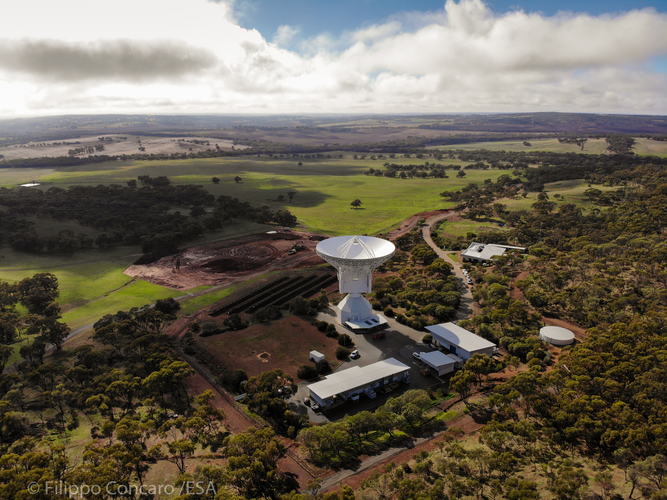One step closer to understanding the Milky Way
Thursday, 16 June 2022 10:27 Unravelling the mysteries of the Milky Way and mapping it in the process is one of the main goals of the Gaia mission. On 13 June 2022, the mission came a step closer to achieving this with the publication of the complete third star catalogue.
Gaia observed and measured approximately 1.8 billion celestial objects for this purpose. By the expected end of the mission in 2025, the largest and
Unravelling the mysteries of the Milky Way and mapping it in the process is one of the main goals of the Gaia mission. On 13 June 2022, the mission came a step closer to achieving this with the publication of the complete third star catalogue.
Gaia observed and measured approximately 1.8 billion celestial objects for this purpose. By the expected end of the mission in 2025, the largest and NASA's Chandra catches pulsar in X-ray speed trap
Thursday, 16 June 2022 10:27 A young pulsar is blazing through the Milky Way at a speed of over a million miles per hour. This stellar speedster, witnessed by NASA's Chandra X-ray Observatory, is one of the fastest objects of its kind ever seen. This result teaches astronomers more about how some of the bigger stars end their lives.
Pulsars are rapidly spinning neutron stars that are formed when some massive stars run
A young pulsar is blazing through the Milky Way at a speed of over a million miles per hour. This stellar speedster, witnessed by NASA's Chandra X-ray Observatory, is one of the fastest objects of its kind ever seen. This result teaches astronomers more about how some of the bigger stars end their lives.
Pulsars are rapidly spinning neutron stars that are formed when some massive stars run Webb set to begin science operations
Thursday, 16 June 2022 10:27 NASA is scheduled to release the first images taken by the James Webb Space Telescope on July 12, 2022. They'll mark the beginning of the next era in astronomy as Webb - the largest space telescope ever built - begins collecting scientific data that will help answer questions about the earliest moments of the universe and allow astronomers to study exoplanets in greater detail than ever before.
NASA is scheduled to release the first images taken by the James Webb Space Telescope on July 12, 2022. They'll mark the beginning of the next era in astronomy as Webb - the largest space telescope ever built - begins collecting scientific data that will help answer questions about the earliest moments of the universe and allow astronomers to study exoplanets in greater detail than ever before. ESA sets out bold ambitions for space
Thursday, 16 June 2022 10:26
ESA has put forward its ambitious plans for the next three years and beyond to increase European autonomy, leadership and responsibility in space.
New vacancies: Director of Science and Director of TEC
Thursday, 16 June 2022 09:00
The European Space Agency is currently looking for a new Director of Science and new Director of Technology, Engineering and Quality, to join its executive board and support the Director General, with responsibility for relevant ESA activities and overall objectives.
Vega-C set for inaugural launch
Thursday, 16 June 2022 05:10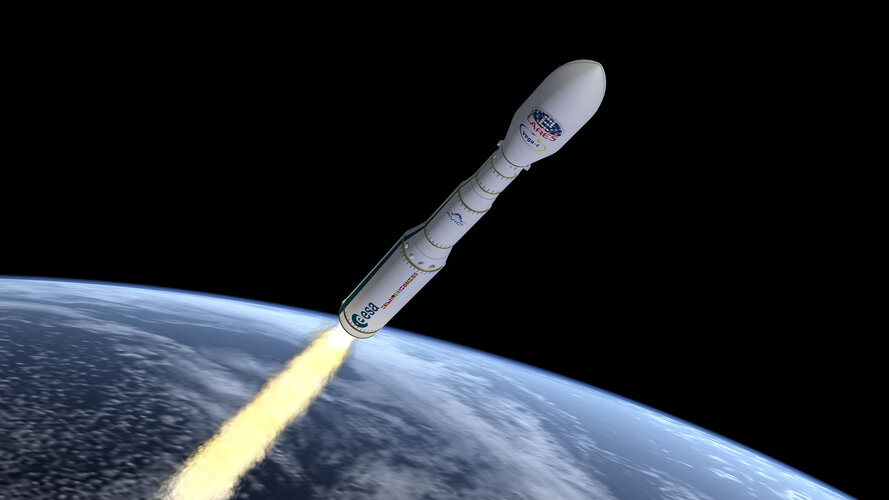
ESA’s new medium-lift Vega-C rocket is nearly ready for its inaugural flight, with its four fully-stacked stages now ready for payload integration, final checks and launch from Europe’s Spaceport in French Guiana.
Flight VV21 will lift off as soon as 7 July, pending suitable conditions for launch.
ESA pursues a shared European vision for the future of space transportation
Thursday, 16 June 2022 05:00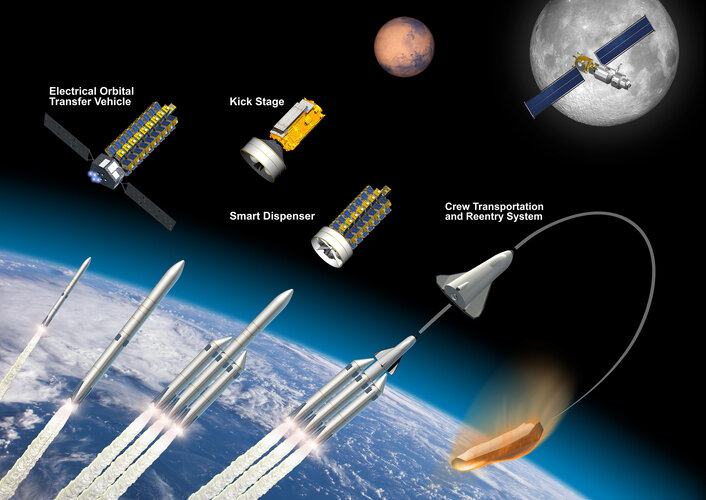
As the European Space Agency prepares to begin operations of its next-generation Vega-C and Ariane 6 launch systems complemented by the reusable Space Rider orbital transportation system, work is underway to define the future of European space transportation capabilities for the coming decade and beyond.
D-Orbit charts ambitious course for space logistics business
Wednesday, 15 June 2022 22:33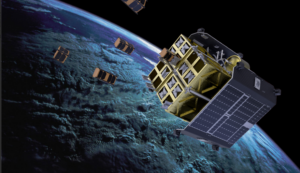
D-Orbit has ambitious plans to offer a wide variety of satellite services from active debris removal to space-based cloud computing.
The post D-Orbit charts ambitious course for space logistics business appeared first on SpaceNews.
Fourth SLS countdown test set for June 20
Wednesday, 15 June 2022 22:28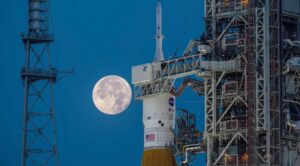
NASA is gearing up for a fourth attempt to perform a fueling test and practice countdown of its Space Launch System ahead of a launch now no earlier than the latter half of August.
OneWeb tests inflight connectivity on Boeing 777
Wednesday, 15 June 2022 20:39
OneWeb said June 14 it successfully tested high-speed services on a commercial airliner last month using its low Earth orbit network.
The post OneWeb tests inflight connectivity on Boeing 777 appeared first on SpaceNews.
House appropriators approve funding increase for DoD, support space programs
Wednesday, 15 June 2022 19:53
The House Appropriations Committee’s defense subcommittee on June 15 approved by voice vote a defense funding bill for fiscal year 2023.
The post House appropriators approve funding increase for DoD, support space programs appeared first on SpaceNews.
ESA and NASA to cooperate on Earth science and lunar mission
Wednesday, 15 June 2022 18:03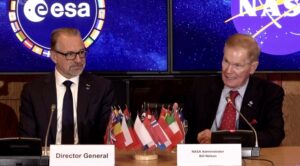
NASA and the European Space Agency announced agreements to cooperate on Earth science and a lunar mission June 15, but agency leaders said they’re still discussing more substantial cooperation on the Artemis program and Mars exploration.
Op-ed | A new way to incentivize safer conditions for operating in space
Wednesday, 15 June 2022 17:50
The importance of space sustainability for the long-term equitable and accessible use of space has been internationally agreed upon for decades. However, in this rapidly evolving tech sector, a shift is needed in how actors pursue sustainability and the ways in which sustainability practices are measured.
Retired four-star general John Hyten joins Blue Origin as strategic advisor
Wednesday, 15 June 2022 17:00
Blue Origin announced June 15 that former vice chairman of the Joint Chiefs of Staff John Hyten, will join the company as executive director of the firm’s Club for the Future foundation and as a strategic advisor.


